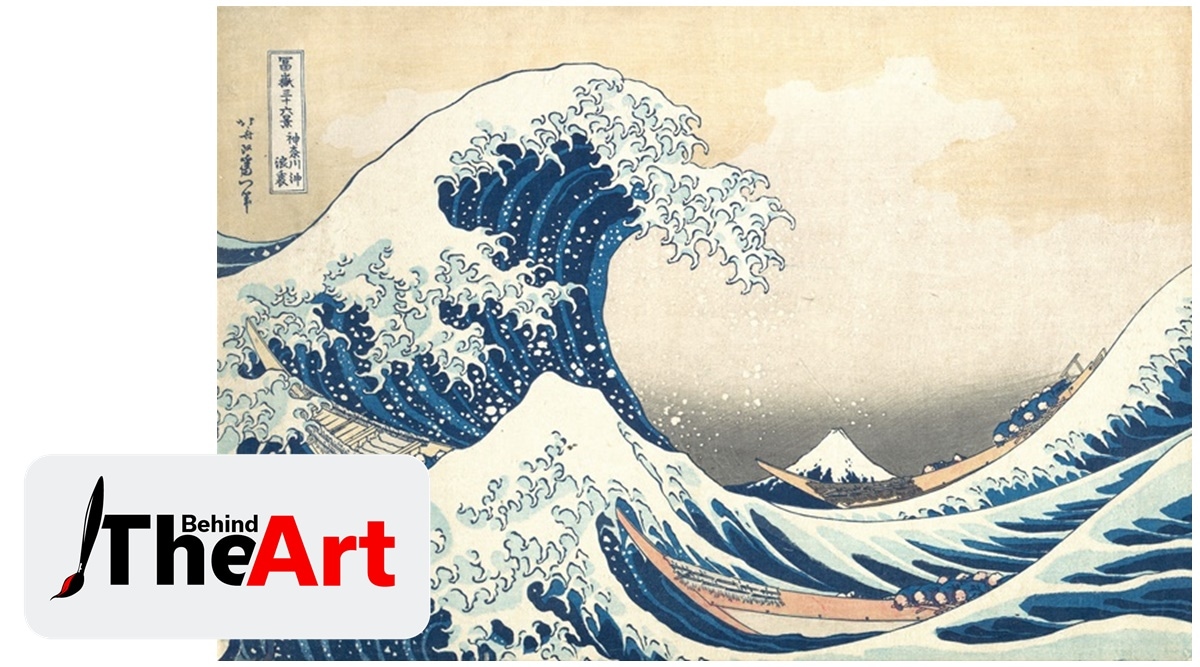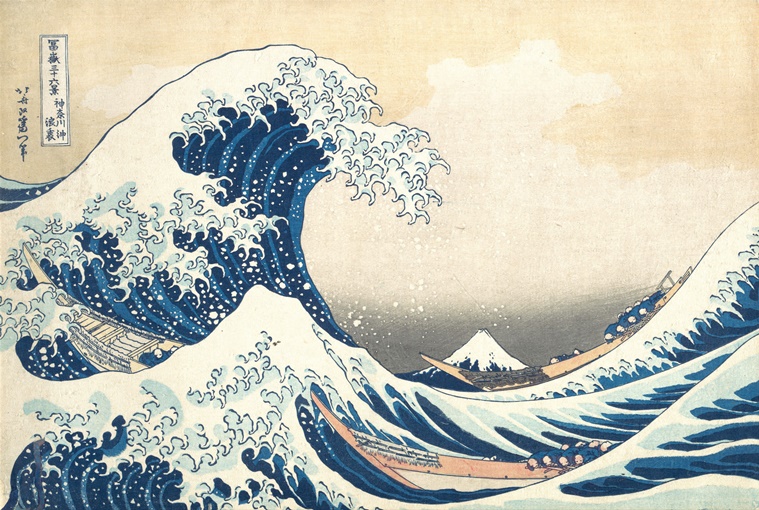 It is said that this print is a symbolic image of the change taking place in Japanese society at the time. (Photo: metmuseum.org)
It is said that this print is a symbolic image of the change taking place in Japanese society at the time. (Photo: metmuseum.org)The Great Wave off Kanagawa (Kanagawa-oki Nami Ura – Under the Wave off Kanagawa) or popularly known as The Great Wave is a woodblock print by the Japanese artist Katsushika Hokusai. Made in 1831 during the Edo period of Japanese history, the print is one of the most known Japanese artworks in history. Several museums throughout the world preserve copies of this print. One of the prints is currently housed in The Metropolitan Museum of Art, New York, United States. The woodblock print Under the Well of the Great Wave off Kanagawa sold for $1.6 million with buyer’s premium, 10 times its low estimate of $150,000 in 2021. It has influenced several notable artists and musicians, such as Vincent Van Gogh, Claude Debussy, Claude Monet, Hiroshige and more. But what is the story behind this print? Why will it appear on the new 1,000-yen bill in Japan starting 2024?
The artist and the concept
Hokusai was born in 1760 in Edo (present Tokyo) and began painting at just the age of six. When he turned 16, he became an engraver’s apprentice. He started creating his illustrations and became an apprentice to artist Katsukara Shunshō, who was one of the greatest ukiyo-e artists of his time. Ukiyo-e is the name for Japanese woodblock prints made during the Edo period. The word ‘Ukiyo-e’ means ‘floating world’ and refers to the impermanence of the world. The earliest prints were made using black and white, but Hokusai started adding colours to it — especially Prussian blue, a rare colour used in Japan at the time. Hokusai was heavily influenced by Japanese, Chinese, Dutch and French paintings. The artist discovered Western prints that came to his country by way of Dutch trade. This is how he became interested in linear perspective and created a Japanese variant of it. He was intrigued by the oblique angles and the contrast of the near and far manmade and natural objects. This can be seen in The Great Wave. There is a large wave in the foreground which dwarfs the small mountain in the distance. Small boats can be seen amid the powerful waves. It is said that this print is a symbolic image of the change taking place in Japanese society at the time. With the foreign influence becoming prominent through trade, it is seen as the symbol of the soul of Japan because of the stillness and fitness of Mount Fuji in the print.
Subscriber Only Stories
Obsession with Mount Fuji
The Great Wave is Hokusai’s best-known work and the first in his Thirty-six Views of Mount Fuji series. It is said Hokusai had an obsession with Mount Fuji. It is, after all, the highest mountain in Japan and is considered sacred. There was another main reason why he made so many prints focusing on this mountain. At the time there was a boom in domestic travel, and thus, the image of Mount Fuji had a growing market. The prints were bought by pilgrims who wanted to climb the mountain or tourists who simply wanted to visit the capital city and admire the view.
 In The Great Wave, there is a large wave in the foreground which dwarfs the small mountain in the distance. Small boats can be seen amid the powerful waves. (Photo: metmuseum.org)
In The Great Wave, there is a large wave in the foreground which dwarfs the small mountain in the distance. Small boats can be seen amid the powerful waves. (Photo: metmuseum.org) Ukiyo-e prints and their popularity
Impressionist artists such as Claude Monet and Vincent van Gogh were great fans of Japanese prints. In the letters to his brother Theo, Van Gogh states how much he admires the works of Hokusai. He praised the quality of his drawing and the great use of lines in the famous Great Wave painting. This one piece of artwork left a terrifying emotional impact on his life and art. Hokusai’s prints showcased modern city life in a linear capacity using the technique where space is flat and atmospheric conditions are highlighted.
Beginning in 1640, Japan was largely closed off to the world and only limited interaction with China and Holland was allowed. This changed in the 1850s when trade was forced open by American naval commodore, Matthew C. Perry. After this, there was a flood of Japanese visual culture into the West. At the 1867 International Exposition in Paris, Hokusai’s work was on view at the Japanese pavilion. This was the first introduction of Japanese culture to mass audiences in the West, and a craze for collecting art called ‘Japonisme’ ensued. Additionally, Impressionist artists in Paris, such as Claude Monet, were great fans of Japanese prints. The flattening of space, an interest in atmospheric conditions, and the impermanence of modern city life — all visible in Hokusai’s prints — both reaffirmed their artistic interests and inspired many future works of art.
Japan’s time-stamp
The Great Wave is considered a time-stamp of the era when Japan was transitioning from its old ways to a modern Japan. The artwork captures the impact of western culture on Japan and how Mount Fuji played an important role in the lives of Japanese citizens. This artwork will be soon seen on the new 1,000-yen bills in Japan, highlighting just how important it is for Japanese culture and the world of Western art. It also showcases just how eternal artworks can be when it comes to representing a culture.
Next Up in Behind the Art: What is the significance of The Birth of Venus by Sandro Botticelli? Why was it so controversial in its time?
📣 For more lifestyle news, follow us on Instagram | Twitter | Facebook and don’t miss out on the latest updates!
- The Indian Express website has been rated GREEN for its credibility and trustworthiness by Newsguard, a global service that rates news sources for their journalistic standards.

